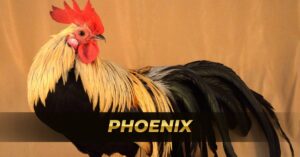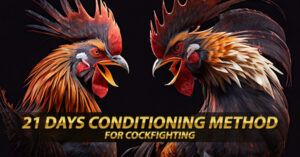Exploring the History and Traits of Peruvian Gamefowls
Peruvian Gamefowls, often called “gallos de combat” in Spanish, are fascinating game birds known for their distinctive features and rich cultural history. These birds have captivated enthusiasts worldwide, not only for their combat prowess but also for their unique characteristics that set them apart from other gamefowl breeds.

Origin and Evolution

Peruvian Gamefowls have a rich history that traces back to ancient times in Peru. The evolution of different breeds over centuries has led to the development of the unique characteristics they possess today. Understanding their historical background is crucial in appreciating the significance of these birds.
Characteristics of Peruvian Gamefowls
One must recognize the striking physical features of Peruvian. Their vibrant plumage, sturdy build, and distinct markings make them stand out in the poultry world. Exploring these characteristics enhances our appreciation for the artistry of nature in creating such remarkable creatures.

Beyond their appearance, Peruvian exhibit intriguing behavioral traits. These birds are known for their intelligence, agility, and territorial instincts. Unraveling the mysteries of their behavior sheds light on the fascinating world of gamefowl psychology.
Popular Breeds
Various breeds fall under the umbrella of Peruvian, each with its unique qualities. From the Asil to the Sumatra, enthusiasts are drawn to the distinctive characteristics of these breeds. Delving into the specifics of each breed offers valuable insights into the diverse world of Peruvian Gamefowls.

Training for Peruvian Gamefowl Competitions
Training Peruvian Gamefowls for competitions is an intricate process that requires dedication, expertise, and a deep understanding of the birds’ instincts. These competitions, often held in arenas where the birds showcase their skills and attributes, demand rigorous preparation to ensure optimal performance. Here’s a comprehensive guide to training Peruvian Gamefowls for competitions:

Myths and Misconceptions
Myths and misconceptions often surround Peruvian Gamefowls, contributing to a clouded understanding of these remarkable birds. One common myth revolves around their perceived aggression. While Peruvian Gamefowls possess instincts related to territoriality and establishing dominance, they are not inherently aggressive towards humans. Proper handling, socialization, and responsible ownership shape their behavior. Another prevalent misconception involves their unsuitability as pets. Contrary to this belief, many Peruvian Gamefowl enthusiasts successfully keep these birds as companions, appreciating their intelligence, beauty, and distinct personalities. With the proper care and attention, Peruvian Gamefowls can thrive in domestic settings, fostering bonds with their human caretakers.

Another misconception often arises regarding their role solely in illegal cockfighting. While it’s true that these birds have historical connections to traditional sabong playing practices, labeling them strictly for this purpose oversimplifies their significance. Peruvian Gamefowls have a rich cultural heritage and contribute to the diversity of poultry breeds globally. Acknowledging their broader cultural context and recognizing the efforts of breeders and enthusiasts dedicated to ethical and legal practices helps dispel the myth that Peruvian Gamefowls are exclusively associated with illegal activities. Addressing these myths fosters a more nuanced understanding of Peruvian Gamefowls, appreciating their cultural significance, unique traits, and the potential for responsible ownership.
Conclusion
In conclusion, Peruvian Gamefowls at Sabong filipino Wala Games Including Sabong are remarkable creatures with a rich history, cultural significance, and unique attributes that continue to captivate enthusiasts worldwide. From their distinctive physical features to their roles in folklore and traditions, these birds offer a fascinating journey into the world of gamefowl.























